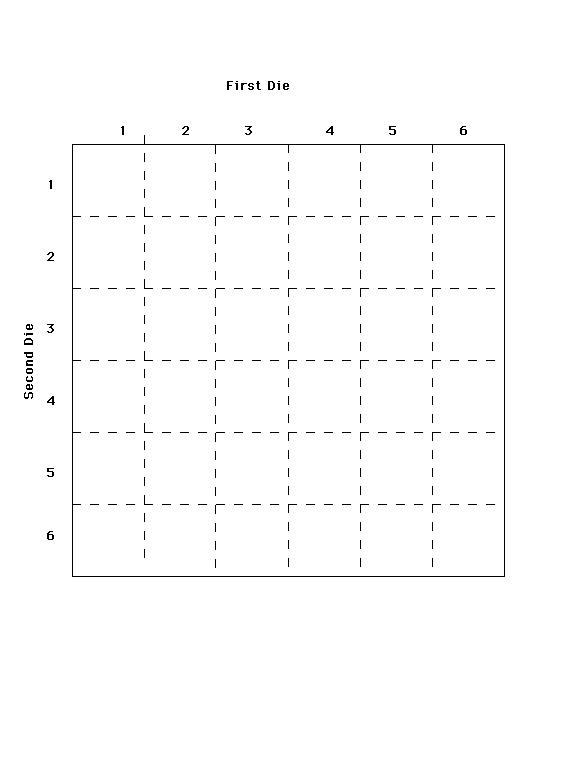Geo Analysis - Home Page
Demonstration 2 -- Probability
 Exercise 2 introduced you to descriptive statistics -- the first broad function of statistical analysis. -- the summary of large sets of observations into more compact and interpretable forms. The second major function is that of inferential statistics -- a means of drawing conslusions about population parameters based on sample statistics.
Exercise 2 introduced you to descriptive statistics -- the first broad function of statistical analysis. -- the summary of large sets of observations into more compact and interpretable forms. The second major function is that of inferential statistics -- a means of drawing conslusions about population parameters based on sample statistics.
Probability --the relative frequency of occurrence of an event in the "long run".
-
Theoretical Probabilities -- those which can be determined with a good degree of confidence purely on formal or logical grounds. The probability of drawing a spade from a randomized deck of cards is 25% : 13/52. The probability of rolling a 1 on a single throw of a die is 16.7% (1/6).
- Random Variables -- whenever we manipulate or make an observation on our environment with an uncertain outcome, we have conducted a probability experiment. The characteristic being measured is a random variable. If we measure the amount of silicon in a rock, then silicon is a random variable. If we add silicon to the sample, then it is not an uncertain value, but a fixed variable.
- The set of possible outcomes of a probability experiment is the sample space.
What is the sample space for an experiment in which two coins are tossed? The first could be H or T. The second could be H or T
- First = H Second = HH or HT
- Second = T Second = TH or TT
- HH, HT, TH, TT
- Roll two dice and record the sum. What is the probability of rolling a 7? .... rolling an 11?In the diagram below define the sample space for this experiment. The probability of a composite outcome is equal to the sum of the probabilities of the simple outcomes of which it is comprised. What is the probability of rolling an odd value -- 1,3, or 5? p = 1/6+1/6+1/6 = 0.5 or 50%.

Draw a histogram of the sample space. On the X-axis plot the sums (2 through 12) and plot frequency on the Y-axis. This is the theoretical frequency distribution for the experiment.
- If the probability of occurrence of an outcome A is the same regardless of whether or not an outcome B occurs, then outcomes A and B are said to be independent of each other.
Return to the Geo Analysis Home Page

 Exercise 2 introduced you to descriptive statistics -- the first broad function of statistical analysis. -- the summary of large sets of observations into more compact and interpretable forms. The second major function is that of inferential statistics -- a means of drawing conslusions about population parameters based on sample statistics.
Exercise 2 introduced you to descriptive statistics -- the first broad function of statistical analysis. -- the summary of large sets of observations into more compact and interpretable forms. The second major function is that of inferential statistics -- a means of drawing conslusions about population parameters based on sample statistics.